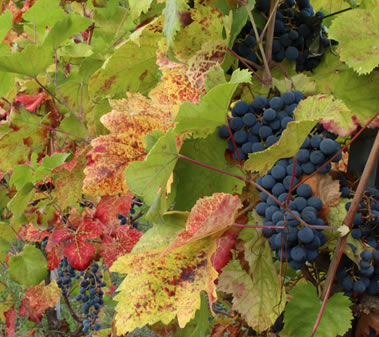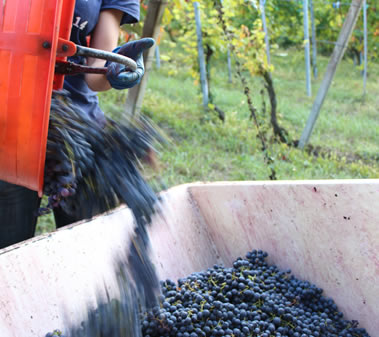History
In 1920 our great-grandfather Davide founded the Sfogliata winery and our uncle Angelo continued his work. The winery is located in the central area of the Oltrepo’ Pavese, on the crest of a sunny and airy hill. Due to its small dimensions (5 hectares of vineyards), the winery is a family-run reality. The feeling of passion and enthusiasm kept up by Laura and her closest family members now carries on this enterprise. They plant the vines in a highly suitable and dedicated area to get wines that combine both tradition and quality. The aim is to get wines that are able to “talk” about the land which they come from.
Reality
Over time, the old vineyards have been renewed and in the vast majority oriented from north to south in order to allow the best of sunshine on the façades of the rows, which are thus exposed from east to west. The Guyot vine training system, with a planting density of 3700/4100 plants / ha, allows low production / plant, reinforcing its flavour and sugar concentration. A good management of green pruning, providing adequate suckering, vine pruning and lopping, encourages a more dry and healthy microclimate in the vineyard, in order to obtain the best possible maturation.
The thinning, at an early stage of veraison, allows a balanced distribution of the clusters on the vine espalier in order to avoid mold and presence of moths, further improving the final product.
The wine harvest begins in the last decade of August with the Pinot Noir grapes, continues in the first decade of September with Riesling in order then to be devoted to the Barbera, Croatina, Rara black grapes and so on, up to the first ten days of October. All the grapes are rigorously handpicked and immediately pressed; the fermentation is diversified according to the kind of wine: without maceration for the white ones, with maceration from one to two days for the pink types, from five to six days for the red ones. At the end of the tumultuous fermentation, the fragrant musts are tapped and put down into storage tanks for the decanting and refining period during which the appropriate racking is performed.



Business ethic
We perform all the operations in the country and all the processing steps in the cellar with utmost care and same attention to every small detail. We want to represent it on our labels, where there are two grey rectangles on the foreground. They are our pivots, our concept of “how and why to produce Wine”, that we will never renounce. The first, light grey rectangle represents all our efforts, our day by day dedication, to get the sweetest and healthiest grapes. Such health and sweetness are what allow us to turn them into a good wine in the most natural way. We are not concerned about our benefit first, but we strive for our wines consumers satisfaction, health and well-being.
Here it is the importance of the dark grey rectangle: every costumer is our guest and friend.
While he sips our wines, we want her to feel like standing in our beautiful countryside, tasting the sunshine, the fresh air and our great landscapes.
Drinking good wine means feeling good in a broad sense. Wine is a precious nourishment, a daily care of our body and keeps ourselves young. But wine means also to share, to stay together, it means joy and happiness.
We live every working day on these principles. Thanks to them, we produce our wines always with the same purpose: well drinking to feel good. Every wine, though, has got different traits and its own personality.



